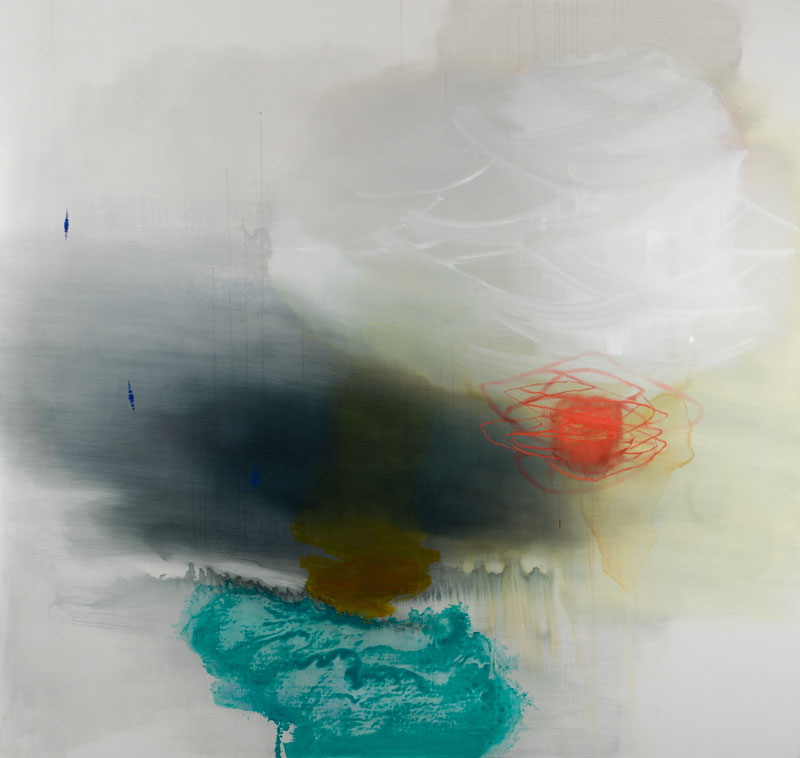

At Sea
Mixed Media on Linen
72 x 68in
2013
Walking with W.G. Sebald, Andrei Tarkovsky and Giovanni Battista Pergolesi.
What is more real than real? When the representation of experience is suggestive rather than descriptive, truth can transcend what we think to be truth.
Trying to capture truth has always remained an elusive goal, but it’s this that motivates the artist. The very action of engaging in potential is a creative engagement, albeit intangible. This real is real when it affirms the watery and changeable nature of memory and therefore the impossibility of its representation.
Polyphony best describes the situation – numerous suspensions of contrary sound layered over a conjunct baseline. This musical structure uses the multilayered and unifies them, each juxtaposition creating an entirely new position.
W.G. Sebald takes the reader on a walk and unfolds the story as though it’s happening in real time, but in fact the time emerges from various facets and imaginings. The reader comes along on the ride and the tone and pace is one of immersive, percussive silence.
The layering up of the writers’ stream of consciousness sets a tone that feels like a drone or a sustained chord and the effect feels utterly visual.
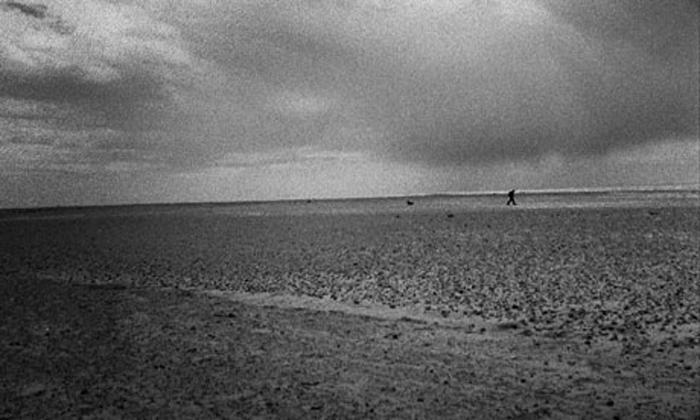

W.G. Sebald
Image from The Rings of Saturn
Sebald’s space is one of fog (a journey that feels lived because of the time implied and the visual spaces offered up) all amidst the blanket of obscured memory. This is the polyphonic made visible. The layering up of the writers’ stream of consciousness sets a tone that feels like a drone or a sustained chord and the effect feels utterly visual. The dialogues of thought somehow enter into a mediating space between what is human and what is mystical. Chance, dream and memory are equal to the physical earth, bringing the readers’ attention to the multiple moments that make up each moment. It’s a permeating feeling of comfort – knowing this artist had his audience in mind to recreate meaning, making it anew each time it was encountered.
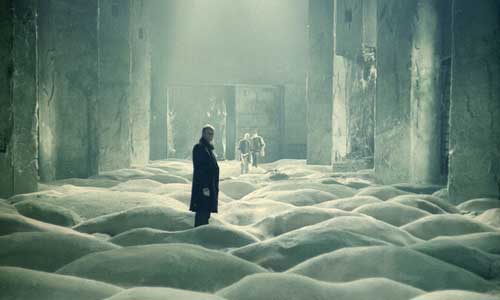

Tarkovsky
Film still from Stalker
And Tarkovsky’s expansive painterly framing transforms time into a collapsing of dream and reality. He was so intent to create an honest representation of time that his films occupy an abstracted space that draws largely from memory and dreams. Time that is represented as it appears in reality is like walking through an experience.
In his film Stalker, the time zones become suspended and collapse as memory and experience merge. A room at the end of the zone is the desired goal – a place where your innermost wish will come true. To get there, the stalker is engaged to lead people through the zone – an unpredictable place where random occurrences are commonplace. The pilgrimage is transformative and invites the viewer to walk alongside, asking the same questions.
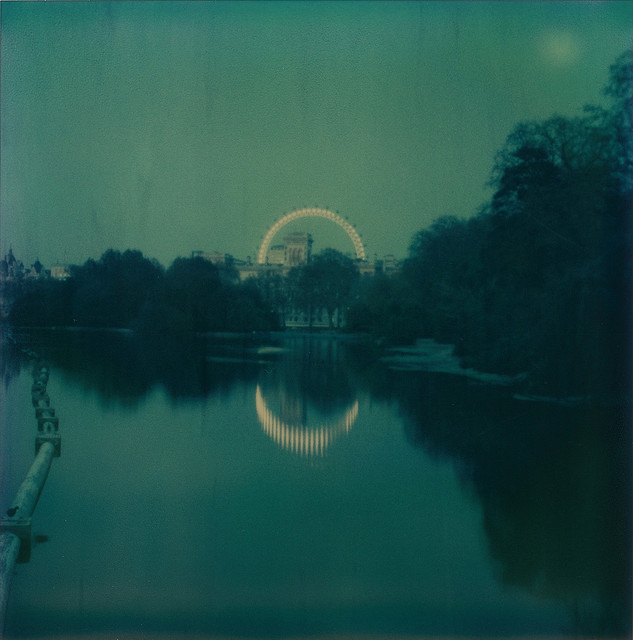

Polaroid taken by Tarkovsky
Tarkovsky evokes the mystical by basing memory in a world of intangibles. His films emerge as would a painting. There are moments in this film that are fleshed out, whilst others that are as gently touched as a swathe of light entering a window. They are polyphonic by nature, and rhythm is the structure that binds it all together. The ebb, flow and cadences all contribute to a pulse that keeps everything in flux.
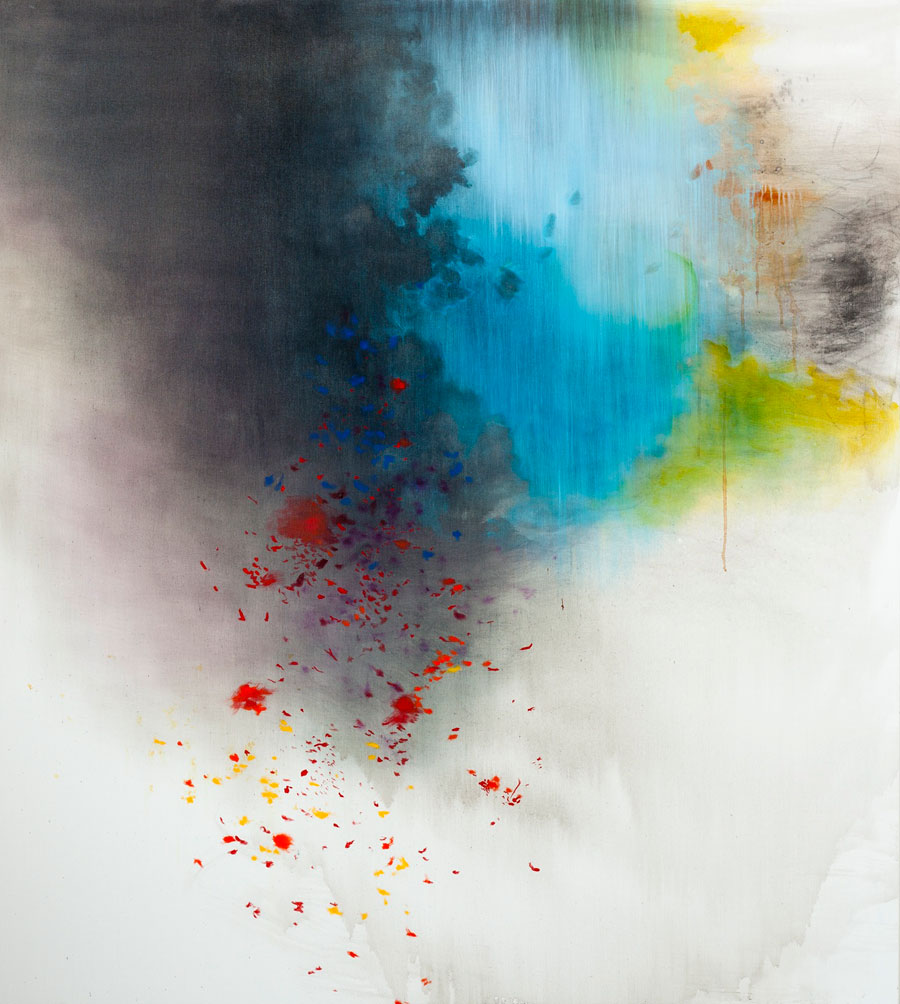

Murmuration
Mixed Media on Linen
60 x 54in
2012
The polyphony in the music of Pergolesi allows for a multitude of figures to enter the present moment. The sounds are like memories and how they are redefined every time something is recalled.
Movement and rhythm drive Pergolesi’s lament, The Stabat Mater – an ode to the grief of Mary at the side of the crucified Christ. His polyphony provides an auditory space to flesh out the varying layers of memory that occur simultaneously. The structure gives the opportunity to resurrect shelved reactions and put them next to whatever wants to arise. It’s both contrapuntal and discordant. Polyphony permeates and provides counterpoints of time butted up against each other.
The structure gives the opportunity to resurrect shelved reactions and put them next to whatever wants to arise. It’s both contrapuntal and discordant.
Pergolesi’s space is a unified space and it connects the listener to a time laid bare. The aural enshrouds and makes it possible for the listener to engage in multiplicity. It is from this non-dual space where the potential for merging arises, that an artist can truly connect to the meaning of his or her existence. The act of creating, harnesses moments converging in a manner that can only be described as polyphonic.
Just as polyphony can suspend the present and let it merge with all other moments in time, the essential fragmentation of experience is the truth of every moment.
Zones of space in an artwork attempt to realign and contextualize the memory of experience. A flowing and rhythmic space can be intersected with intrusions, thereby affecting the remainder of the work. Everything is in flux and can be suspended at any time by an arising event. Fragmentation and layering suggest multifarious and simultaneous memory emerging within and through the act of making. For the real to be real a permeating layered rhythm can harness a potential space that is beyond real.
When an artist is striving to attain truth, a transcendent space emerges that unifies all experience and time.


Buzz, Mixed Media on Linen, 74 x 68in, 2012
Memory House, Mixed Media on Linen, 72 x 68in, 2013
Distill, Mixed Media on Linen, 74 x 68in, 2012